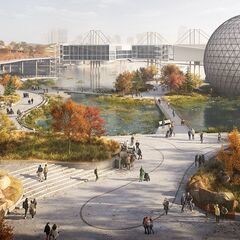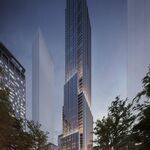There is a renewed effort underway to protect Ontario Place's position as a public amenity and cultural asset for Toronto as the provincial government continues to focus on private development as its preferred lifeline option.
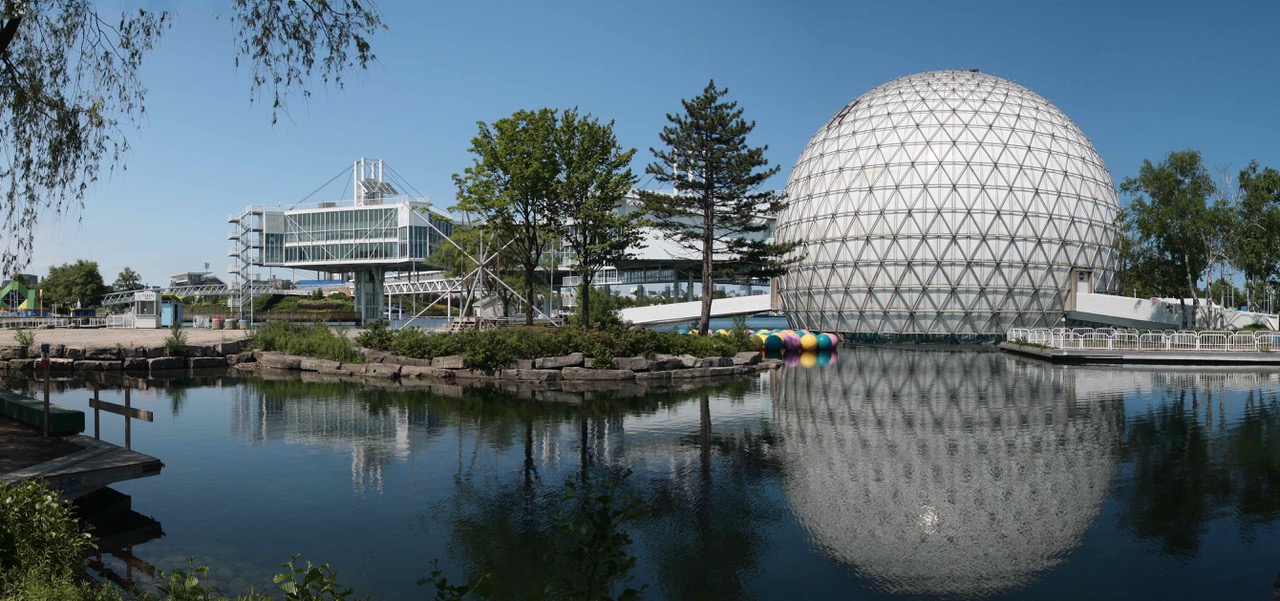 “The Cinesphere and the pods realize in tangible physical form some of the most ambitious utopian architectural ideas from Europe and the United States in the 1960s,” says Bill Greaves, Architectural Conservancy of Ontario. Image courtesy of the Future of Ontario Place Project.
“The Cinesphere and the pods realize in tangible physical form some of the most ambitious utopian architectural ideas from Europe and the United States in the 1960s,” says Bill Greaves, Architectural Conservancy of Ontario. Image courtesy of the Future of Ontario Place Project.
A coalition of public realm-focused professionals across the World Monuments Fund (WMF), the Daniels Faculty at the University of Toronto, and the Architectural Conservancy Ontario (ACO) have come together to add their voices to the discussions around Ontario Place's purpose and its legacy.
“We are proud to support this important project for Ontario Place. We hope that this campaign will bring international attention to the challenges facing modern architecture, such as neglect, deterioration, and demolition, and demonstrate the tremendous benefits that the preservation of sites like Ontario Place can offer local communities.” - Bénédicte de Montlaur, World Monument Fund President and CEO
 Just west of Toronto's downtown core, Ontario Place is a cultural heritage site that masterfully integrates architecture, landscape and infrastructure. View from the southeast. Image courtesy of the Future of Ontario Place Project.
Just west of Toronto's downtown core, Ontario Place is a cultural heritage site that masterfully integrates architecture, landscape and infrastructure. View from the southeast. Image courtesy of the Future of Ontario Place Project.
The future of Toronto’s iconic waterfront park is uncertain. Recognizing its global significance as an extraordinary example of modernist architecture and landscape design, the WMH flagged Ontario Place on the 2020 World Monuments Watch, a list of at-risk cultural heritage sites. While the park is publicly owned, and for the benefit of all Ontarians, these groups are responding to the provincial government’s vision to privatize the area. The province’s most recent attempt to tackle the ongoing saga of what to do with the 155-acre, nearly 50-year old site saw it inviting redevelopment proposals from international developers. The province envisions a developer-driven scheme, a mega attraction of the sport/retail/entertainment kind. Its pitch for a “spectacular world-class, year-round destination” does not rule out the destruction of the iconic Cinesphere geodesic dome or the over-water pods, nor does it require waterfront grounds remain entirely public. Public, professional bodies, and community advocacy groups such as Ontario Place for All, OALA, TSA are voicing their concerns over a lack of consultation and unwarranted demolition, reconfiguring and re-purposing of this landmark waterfront park. In short, a privatization of public assets for a much needed but short-term cash injection.
Building on this push to keep Ontario Place an open, accessible park for Ontarians and tourists alike, the WMF, Daniels Faculty and ACO have launched the Future of Ontario Place Project. This initiative aims to both grow awareness of this significant social issue around Ontario Place and to safeguard its future. It’s a call for urgent action: for the City and the Province to consult with the public, open and transparently, about what the community wants and needs at a revitalized Ontario Place. To give their voices as much consideration as the developer community and ensure a balance of stakeholder voices around the table –not dominated by any special interest group. With increasing interest across Canada and beyond, not only Ontarians are watching how provincial governments will ensure that Ontario Place is both preserved and enhanced to provide a positive impact for future generations.
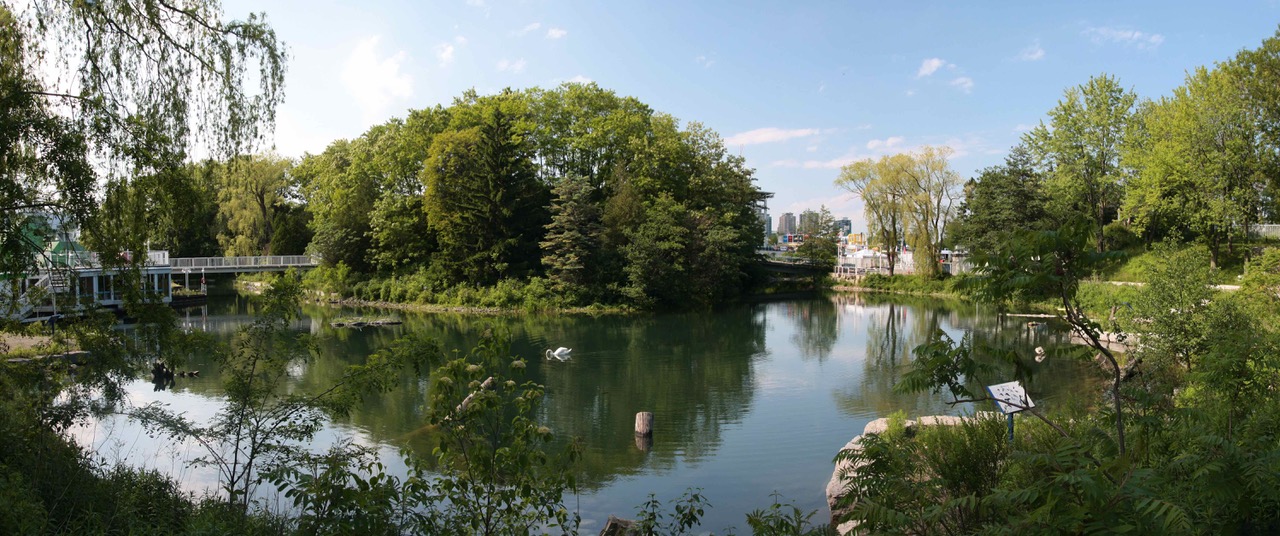 Mature trees and recent aquatic habitat restoration. Ontario Place weaves visionary architecture and a series of artificial islands and lagoons into a uniquely integrated environment. Image courtesy of the Future of Ontario Place Project
Mature trees and recent aquatic habitat restoration. Ontario Place weaves visionary architecture and a series of artificial islands and lagoons into a uniquely integrated environment. Image courtesy of the Future of Ontario Place Project
The website, futureofontarioplace.org, is the first consolidated public resource on Ontario Place to find archival images and information, contribute your own stories about the site, and hear interviews with leading practitioners, from Heritage Architect Michael McClelland to Urbanist Ken Greenberg, about its significance. The project will also host a series of live debates on the current issues facing Ontario Place, facilitate an extensive letter-writing campaign, and host a Canada-wide design challenge calling for alternative proposals for the site’s future.
In 1971 architect Eberhard Zeidler and landscape architect Michael Hough delivered a future-thinking complex for entertainment, education and recreation, serving as a retreat for Ontarians without access to summer cottages. While originally designed to promote the province through programming and exhibitions, the site evolved into a commercial theme park before mostly closing in 2011. The reopening of the Cinesphere, ongoing site programming, and the 2017 completion of Trillium Park and the William G. Davis Trail have since drawn countless new visitors. Covid presents a whole new case for open public space in what is a diminishing resource in a city that has grown exponentially over the decades. More than ever, the public needs outdoor, green areas in an increasingly densifying city. Forward-thinking cities around the world –Chicago, Boston, Paris, Seoul– have proven how actively investing in waterfront amenities for public use brings long-term benefits across local, social/cultural, economic, tourism sectors.
If you are spurred by the call to Action, The Future of Ontario Place Project calls on the public and community of architects, urbanists, and city builders to join the initiative in advocating for the protection of Ontario Place. Visit https://futureofontarioplace.org to share stories and experiences, and sign the letter to the Ontario government urging immediate action for the site’s protection. You can also view the campaign video here, and follow FOPP on Instagram @futureofontarioplace and Twitter for updates @futureofOP.
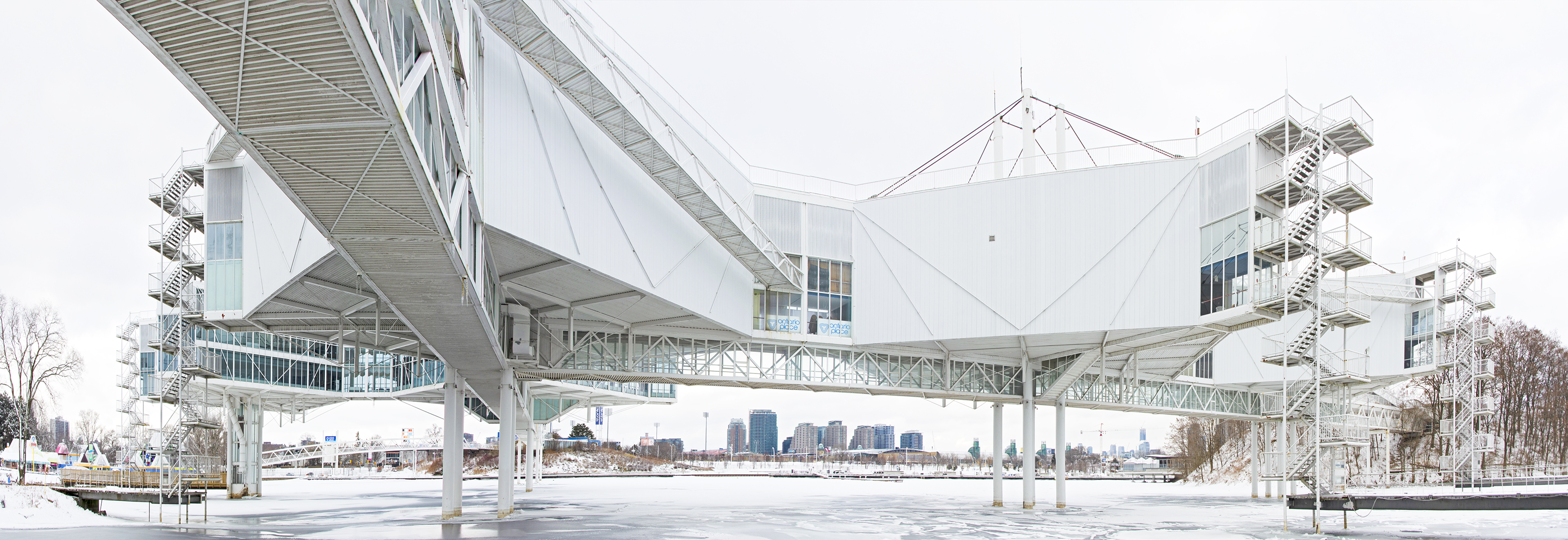 Ontario Place’s visionary architecture and infrastructure includes steel-and-aluminum pods which are suspended over the water. Image courtesy of the Future of Ontario Place Project
Ontario Place’s visionary architecture and infrastructure includes steel-and-aluminum pods which are suspended over the water. Image courtesy of the Future of Ontario Place Project
Additional information and images can be found in our Database file for the project, linked below. Want to get involved in the discussion? Check out the associated Forum thread, or leave a comment in the space provided on this page.
* * *
UrbanToronto has a new way you can track projects through the planning process on a daily basis. Sign up for a free trial of our New Development Insider here.
| Related Companies: | Urban Strategies Inc. |

 11K
11K 



